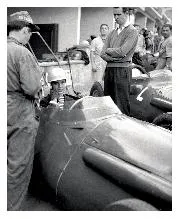D is for de Tomaso, Alejandro
Middling racer, prolific car builder and canny (some might say Machiavellian) industrialist who bought Maserati in the mid-70s. He didn’t use much of his own money, though. Instead, the Italian government provided backing to the Benelli motorcycle firm (which de Tomaso controlled), which in turn bought the firm and installed de Tomaso as its principal. Maserati subsequently opted for volume manufacture with the Biturbo, the marque’s reputation taking a battering thereafter as warranty claims mounted up.
E is for Emilia-Romagna
This region of northern Italy is home to Maserati and a certain other red-car maker. Oh, and let’s not forget Lamborghini, Pagani, Ducati and countless specialist suppliers. It really is the country’s ‘motor valley’.
F is for Fiat
De Tomaso sold out to Fiat in 1993, by which time Maserati was on its knees. Closer ties with Ferrari ensued, not least with sharing technology, but these have since loosened.
G is for Gran Turismo
Few marques ever ‘got’ the gran turismo concept quite so completely. The firm has produced some of the great GT cars, be it the many variations of A6G, the 3500GT, 5000GT (above), Mistral, Sebring, Mexico, Khamsin and, of course, the mighty Ghibli.
H is for Hug, Armand
This Swiss racer drove Maserati sports cars and single-seaters. He won the 1938 Bern Grand Prix aboard his privateer Maserati 4CM, which raised several eyebrows. He was awarded a works drive for the following year’s German GP, only to crash a week earlier while practising for the Albi GP. The accident left him paralysed.
I is for the Indianapolis 500
Wilbur Shaw claimed back-to-back wins at The Brickyard aboard an 8CTF in 1939-40. The ‘Boyle Special’ belonged to, cough, ‘colourful’ Chicago union leader, Michael Boyle (aka ‘Umbrella Mike’). Shaw was leading the ’41 event only for a broken wheel to deny him a possible hat trick. The venue also lent its name to the Indy GT car from 1968.




